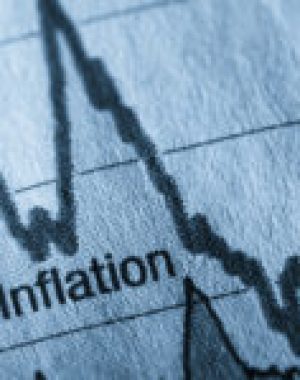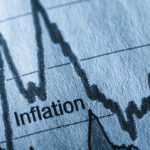At a 2010 lecture discussing the financial crisis of 2007-2009 – Navigating the New Normal in Industrialized Countries – Mohamed El-Erian (now chief economic advisor at Allianz) said, “The crisis was not a mere flesh wound. The crisis cut to the bone.” Once you start cutting bone, you change the structure of whatever is being cut. In terms of the current global economic structure, low interest rates for a longer duration may be one of the structural changes Mr. El-Erian referred to. There is a movement in America to “normalize” interest rates. This article will explore the current dimensions of normal.
The Federal Funds Rate
Greg Ip, the chief economics commentator for the Wall Street Journal, argued in the March 21, 2019 edition that the Fed needs higher interest rates now so that it has ammunition to combat significant declines in the future. One of the important powers vested in the Fed is the power to raise and lower short-term interest rates, by manipulating what is known as the federal funds rate. This is the interest rate at which banks can charge one another for short-term loans. When the Fed wants to stimulate the economy, it lowers the federal funds rate to encourage borrowing; when the Fed wants to slow the economy down before inflation runs too high, it raises the federal funds rate to make borrowing more expensive.
Today, the federal funds rate sits in a range between 2.25% to 2.50%. In 2008, in response to the financial crisis, the Fed dropped the federal funds rate to a range of 0% to 0.25%. The Fed announced no rate increases after that until 2015, when it began a rate increase cycle. The Fed achieved the current range after 9 rate increases.
The Real Interest Rate vs. the Nominal Interest Rate
There is another important term in economics known as the real interest rate. The federal funds rate, now at 2.25%, is known as the nominal interest rate because it is not adjusted for inflation. The real interest rate is determined by the nominal rate minus the rate of inflation. The inflation rate is currently calculated at 2% or lower. With the nominal federal funds rate at 2.25%, minus 2% inflation, the real interest rate is 0.25%.
The Normal Federal Funds Rate Required to Turn a Recession Around
Mr. Ip is concerned because, at the end of the 2006 tightening cycle, the real federal funds rate was 2.75% – and it was 4% at the end of the 2000 cycle. According to Mr. Ip, the Fed needs the opportunity to cut the nominal rate down by four percentage points in order to successfully assist in an economic recovery. Should the economy stumble soon, the current rate isn’t high enough to allow four percentage points to be cut – the Fed can at most cut interest rates by a bit more than 2%, bringing it to 0.25% or so. There is a lot of pressure, especially from the finance sector, to “normalize interest rates” – whatever that might mean. The most common number suggested is a 4% federal funds rate. But what would that do now to the U.S. economy?
The Significance of Core Inflation
Fed Chairman Jerome Powell has stopped further rate hikes in 2019 because he sees inflation falling and global economic growth slowing, including in the U.S. One of the inflation measures the Fed pays attention to is known as core inflation. This measure of inflation excludes food and energy because those sectors tend to be too volatile, and can distort the inflation picture. Recently, core inflation hit 2% which is the Fed’s target rate, but that rate has now slipped below 2%. In response to this fallback, Powell said, “Ten years into this expansion and inflation is still clearly not meeting our target.”
A certain amount of inflation is healthy for an economy, because it shows that there is more demand than supply of goods and services. This causes prices to rise, and it also causes producers of goods and services to catch up to demand by buying more equipment and materials, and hiring more workers. High inflation is not good for an economy. It shows that prices are rising too fast, causing businesses to slow down as they struggle to forecast the costs of production and to set prices for profitability. This is why the Fed is so important as an economic regulator to keep price increases manageable for business and to create jobs by managing short-term interest rates.
My Conclusion
The Fed is already considering the idea that they are too strict and rigid about controlling their 2% inflation target. The suggestion inside the Fed is to loosen up about inflation rising above that target. This attitude may provide a context where the economy can grow with less friction. Runaway inflation seems to be a very remote possibility given our current situation. I suggest that the question of “normalcy” needs to be examined with a high degree of flexibility, not nostalgia for days gone by. A 4% federal funds rate may not be normal in the context of how things are now.
The Great Recession that got us here was not normal. Former Fed Chair Alan Greenspan predicted that there would never be a nation-wide drop in real estate values – but it did occur causing an avalanche of job losses. Alan Greenspan also believed that financial institutions would never be so careless and neglectful in protecting their self-interest. There were compliance departments challenging sub-prime real estate loans, but they were shot down by their institutions because the sub-prime marketplace was on fire with profitability. We have also never had a president that loves tariffs and trade wars, as we do now. Tariffs are instruments of economic destruction. You tariff something like steel and cars, and the world produces less steel and cars, and the prices for both go up – paid for by U.S. consumers.
Because of so much abnormality, we may have to tolerate low interest rates and slower growth until some of the abnormality subsides. Slow growth is still growth, and it produces investment opportunities.


